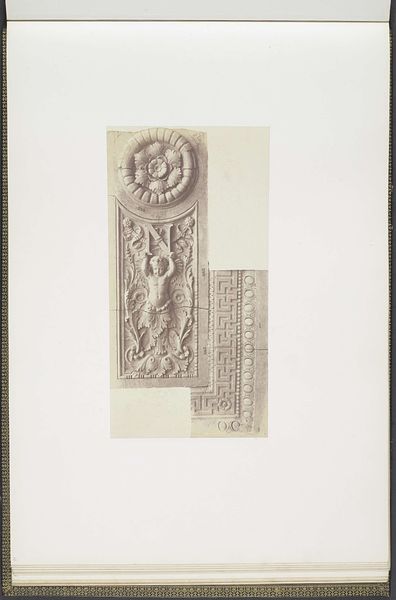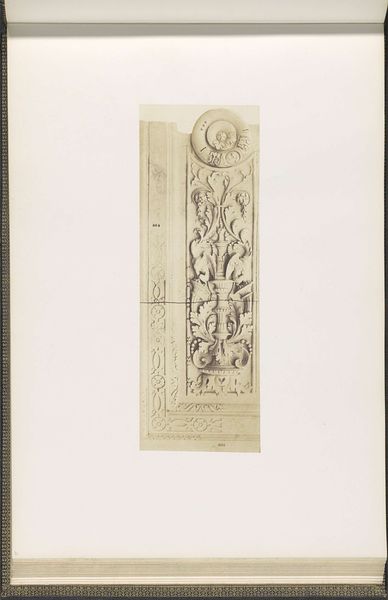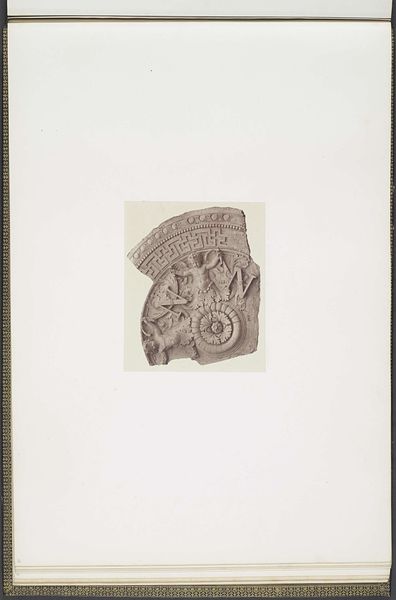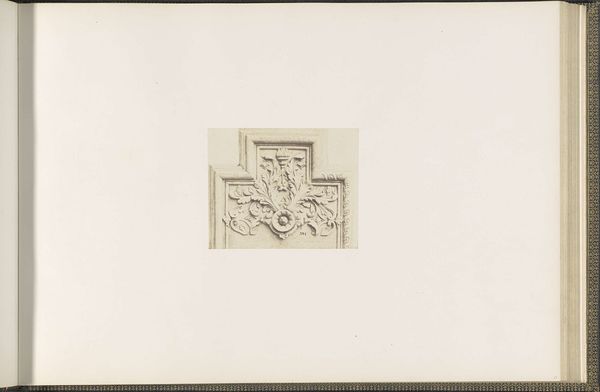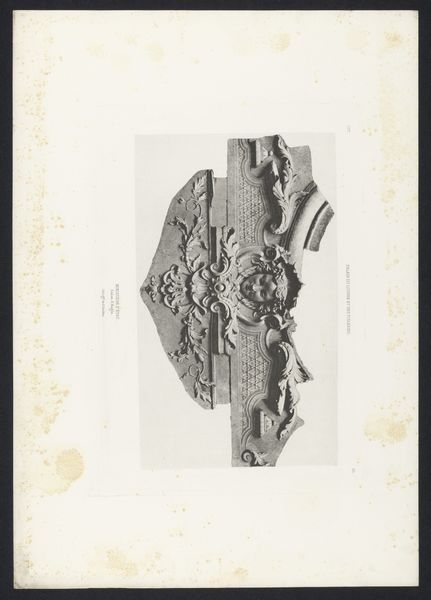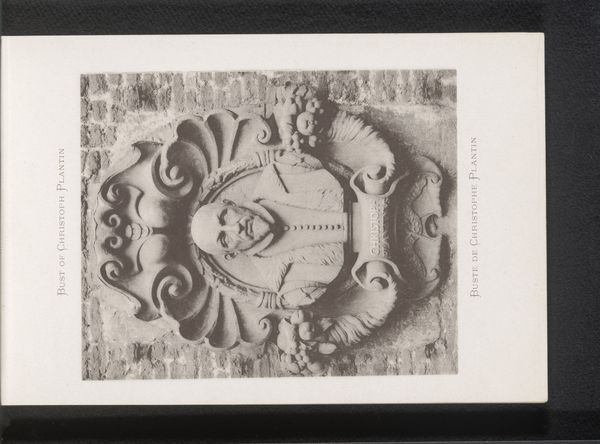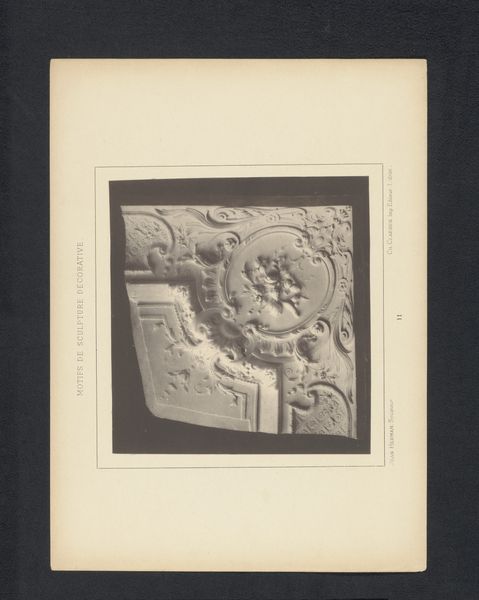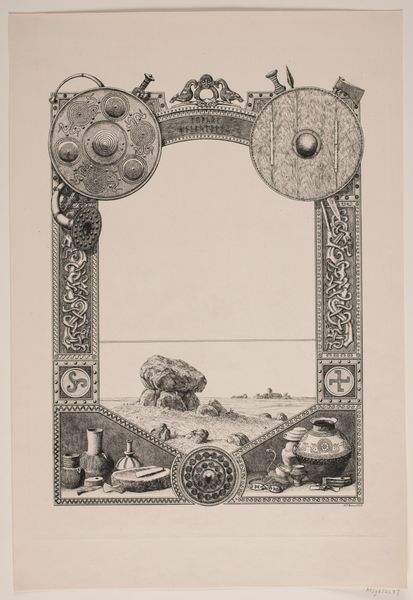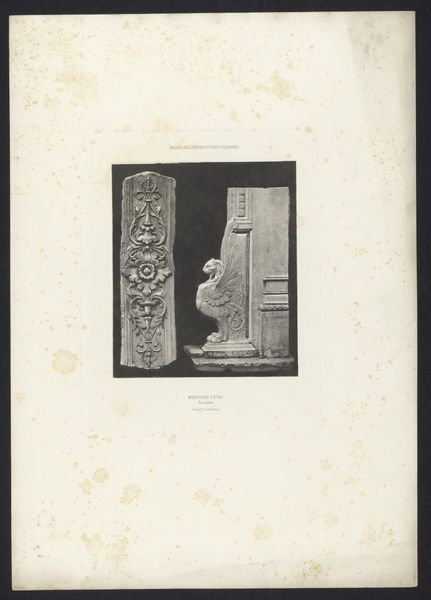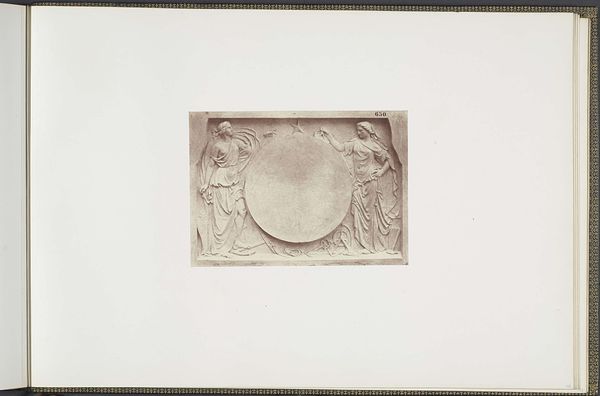
Gipsmodellen voor een versiering van het Palais du Louvre door Pierre Edouard Charrier c. 1855 - 1857
0:00
0:00
edouardbaldus
Rijksmuseum
print, relief, photography, collotype
#
neoclacissism
# print
#
relief
#
photography
#
collotype
Dimensions: height 378 mm, width 556 mm
Copyright: Rijks Museum: Open Domain
Editor: This is a print from c. 1855-1857 titled "Gipsmodellen voor een versiering van het Palais du Louvre door Pierre Edouard Charrier" by Edouard Baldus. It appears to be a collotype of plaster models, showing elements intended for the Louvre’s decoration. What’s striking to me is how fragments meant for a grand palace are presented so plainly. How do you interpret this contrast? Curator: I see this photograph as a fascinating document of power and representation. Baldus wasn't just photographing art; he was capturing the visualization of state authority in mid-19th century France. The neoclassical style, which is clearly evident in these plaster models, served as a visual language, a way to connect the current regime with the perceived glory of the Roman Empire. How does it make you feel when you think about these fragments operating as tools of soft power? Editor: That’s an interesting point. It feels almost propagandistic now, framing present rule in an ancient legacy. Does the choice of photography, then a relatively new medium, complicate this message? Curator: Absolutely! Photography provided a veneer of objectivity, suggesting that these weren't simply artistic choices, but accurate representations of historical greatness. But think about the limitations Baldus was working with; collotype printing has its own way of distorting perspective and presenting values. Can the imperfections or variations we may see actually expose inherent social biases embedded in the selection and presentation of the plaster casts themselves? Editor: So, Baldus’s work, by virtue of being photographic, seemingly offered authenticity, while simultaneously, it actively reinforced dominant narratives of power and history through a very specific artistic style. Curator: Precisely. It prompts us to question how "objective" records can actually be potent tools for perpetuating ideological frameworks. Editor: It’s made me reconsider how even seemingly straightforward documentary images are constructed to communicate particular world views. Thanks for this deeper understanding. Curator: My pleasure. Recognizing those constructed narratives allows us to critically examine our own relationship to these visual histories.
Comments
No comments
Be the first to comment and join the conversation on the ultimate creative platform.


